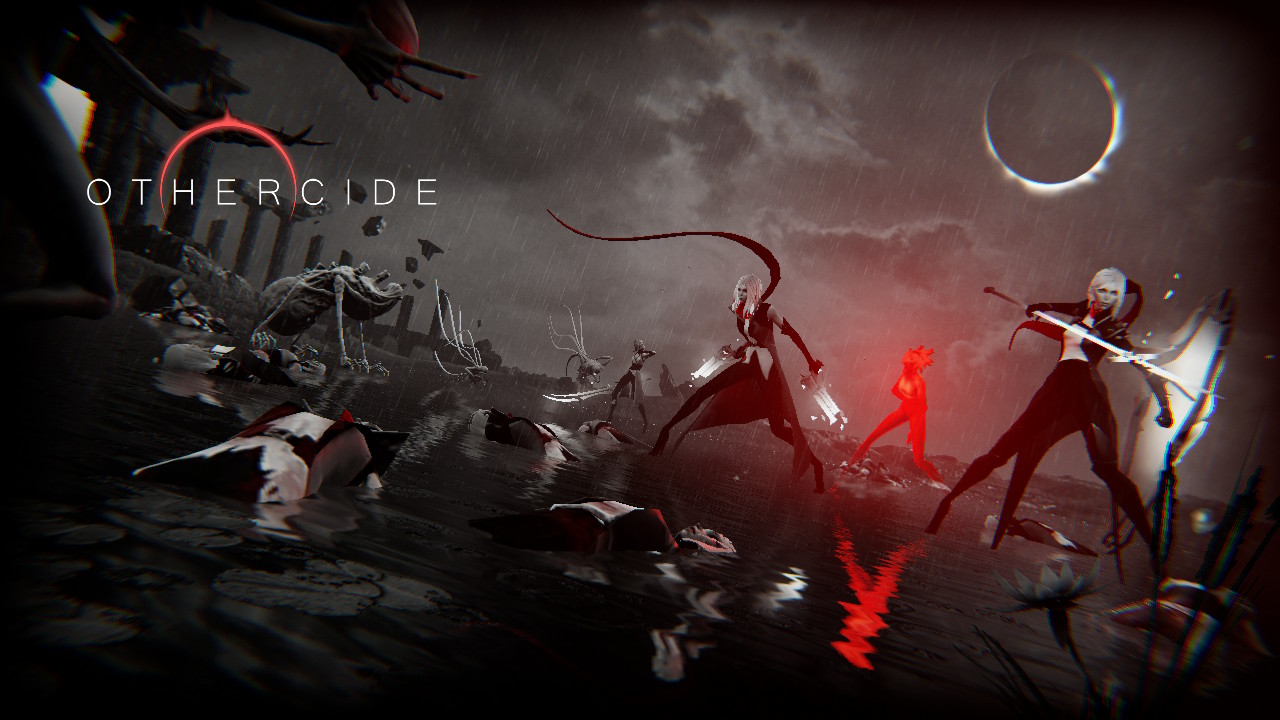[Review] Othercide – Nintendo Switch
Othercide
Nintendo Switch
Developed By: Lightbulb Crew
Published By: Focus Home Interactive
Category: Strategy, Role-Playing, Roguelike
Release Date: 09.10.20
Composers: Max Lilja, Pierre Le Pape, Solitaris, Robin Lener
Othercide for the Nintendo Switch is an interesting experiment in mixing together turn-based strategy games, roguelike elements, and an absolutely brutal difficulty curve. The results are frequently stunning, but just as frequently frustrating. First, a bit of the good; while the storyline isn’t super deep or involved, the game’s world and its lore are captivating and well-presented. Players find themselves allied with the Red Mother, a shade of the greatest warrior of all time, who aids you in your never-ending battle against the Chosen One of Suffering. She generates clones of herself, called Daughters, to be your soldiers in this war. Progressing through the game unlocks the Red Mother’s memories and remembrances, which can be equipped to your Daughters, but more importantly, they’re accompanied by small bits of backstory that, while sparse, develop an intriguing and engrossing world.
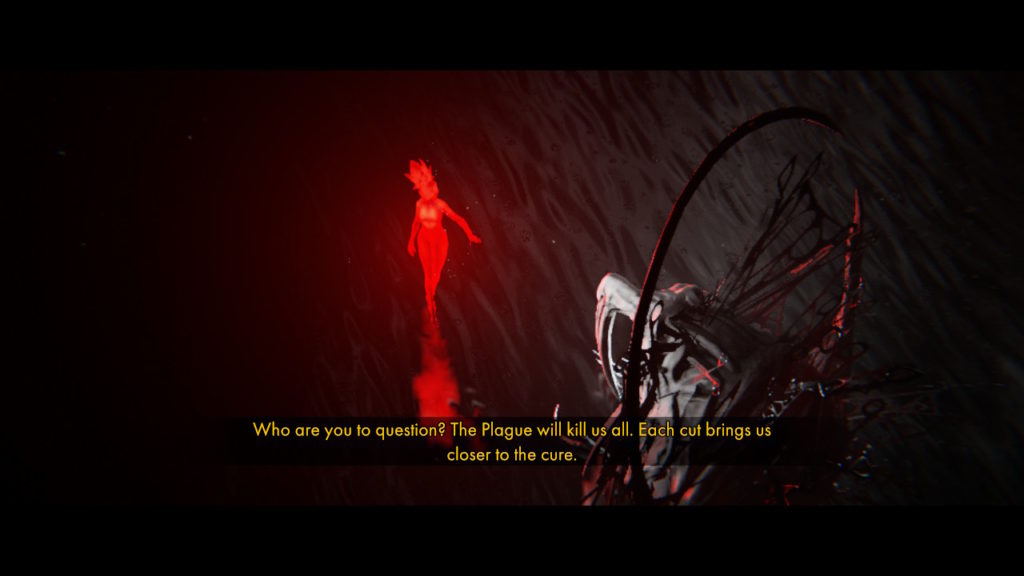
The roguelike elements go hand-in-hand with the game’s brutal difficulty; the first screen that pops up when you start a new game tells you to get ready to die. A lot. When you do, you have to restart pretty much from scratch, although you can unlock remembrances that will allow you to carry over some of the advantages you’d built up through your previous runs. There are a set number of pre-rendered battlefields, so you don’t get a unique battlefield every time, but the mission types and difficulties are randomized, which keeps things varied enough to stay interesting.
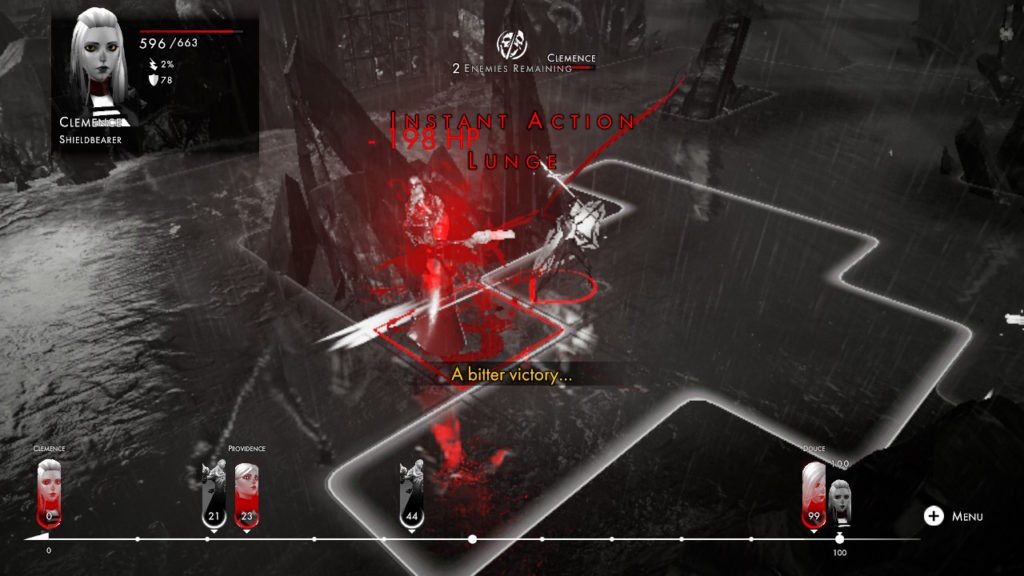
The game progresses through several weeks; every day, several missions will be available for you to tackle. You have to complete at least one before you can move to the next day, but after that you can choose to rest at any time. I’d recommend completing as many missions as possible; you’ll need the resources. Some days will trigger certain special effects, like increases to damage or decreases in enemy health and experience. On the seventh day, you have to fight the week’s boss, who is generally ridiculously overpowered and has several different layers that make them even more ridiculous. For instance, the first boss has worshippers that can basically make him completely invulnerable with their chanting. So, you’d think to yourself, “I guess I gotta kill them first.” And then you do, and he activates an ability that makes him faster, stronger, tougher, and arguably as dangerous as he was when he was just basically invincible.
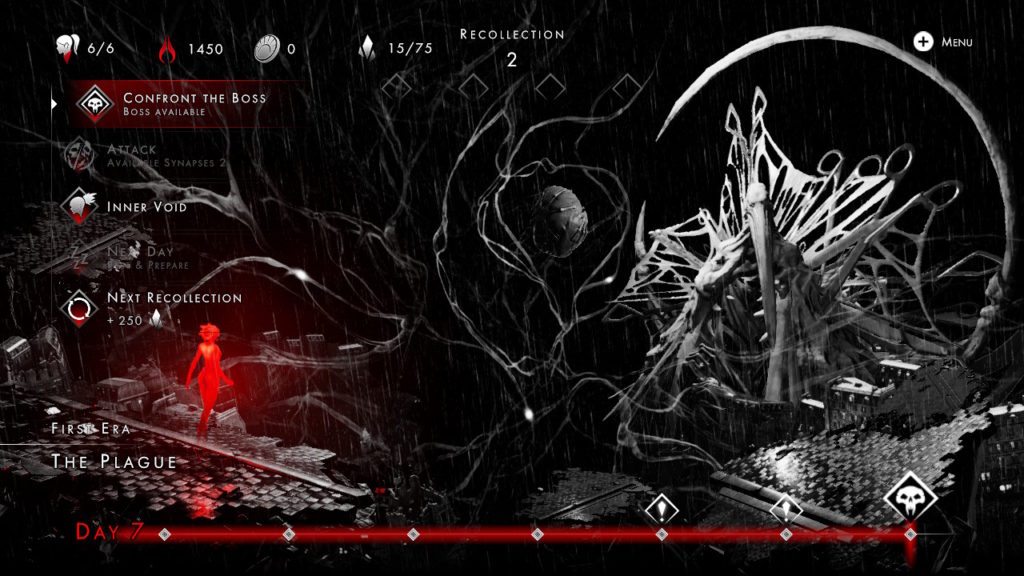
At first glance, Othercide’s combat seems a lot simpler than it is. You can deploy up to three Daughters in each fight, who each have a selection of abilities corresponding to their classes (Blademaster, Shieldbearer, or Soulslinger). They start with only two abilities, and can learn a total of four more if you can get them to a high enough level – good luck with that, though, and we’ll talk more about that in a second. That may seem simple, but there isn’t just one track for each class to follow. Every new ability level offers a selection of new moves to learn, which allows you to customize your team to fit a certain style of play, or even create different teams to cover different scenarios. One of the few advantages the game offers players is the ability to see what types of enemies (but not quantities) will be taking the field before you set your team; if you find that certain abilities are more useful against certain opponents, you can pick characters whose skill set fits those weaknesses.
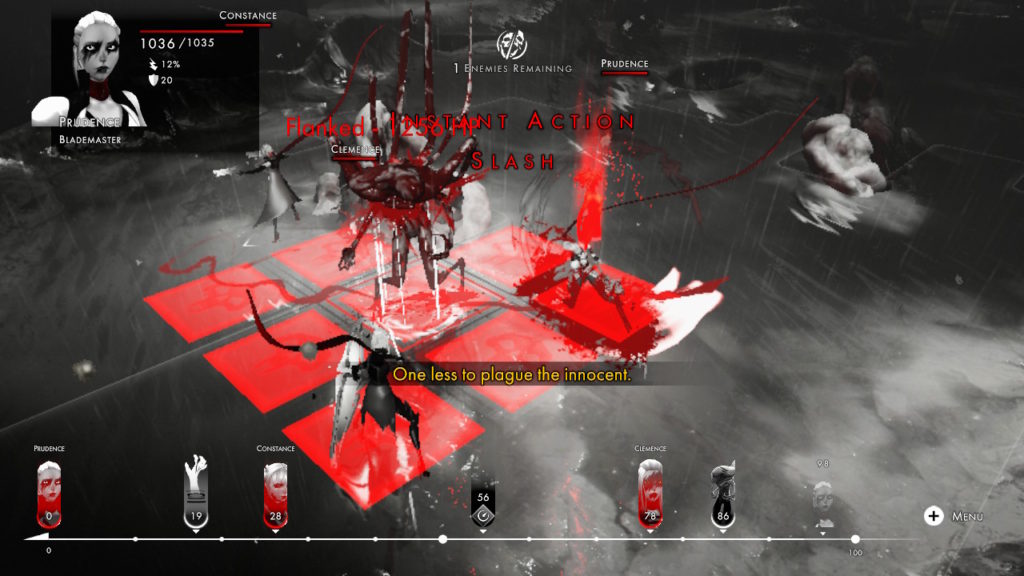
The basics of combat should be pretty familiar to turn-based strategy players. The battlefields are grid-based arenas, and you can move your units around the field to gain positional advantages by attacking from the sides or from behind enemies. The order of turns in combat is dictated by the timeline on the bottom of the battle screen. Each Daughter starts with a pool of 100 AP that can be spent on actions during her turn; moving, attacking, or using another special ability consumes AP. The more AP a Daughter uses during her turn, however, the farther down the timeline she falls, and the later she gets to take a turn. If your Daughters can level up far enough (or as a basic ability for the Shieldbearer class), there are abilities that knock your opponents farther down the timeline, which number among the most essential abilities in the game.
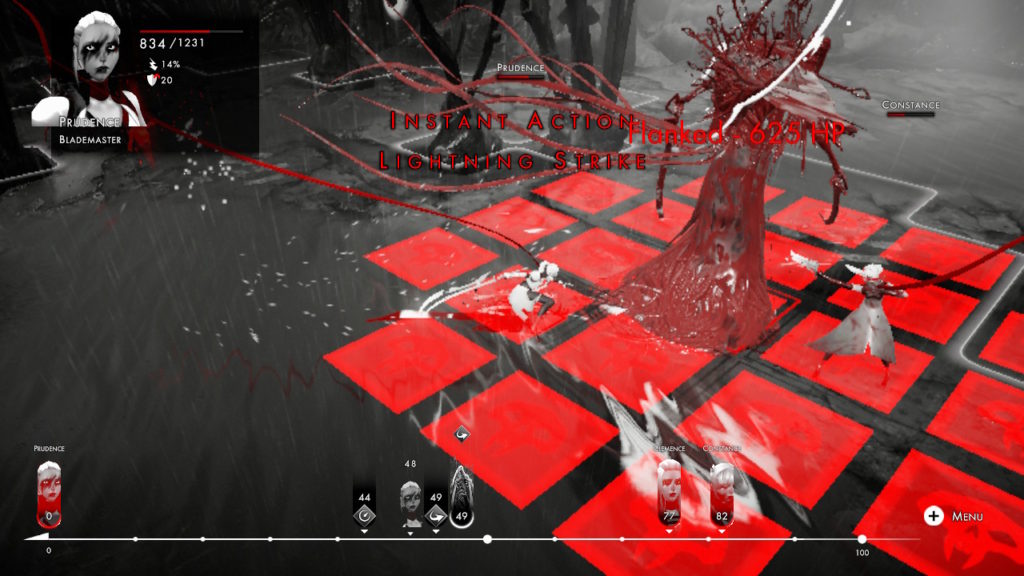
You can also use delayed actions, which add a special icon to the timeline, and activate when that icon hits the active side of the timeline. These tend to be very powerful, but if an enemy moves before the ability activates, they’re useless. Their casting can also be interrupted if you get hit hard enough, but that’s a two-way street; you can prevent your enemies from causing massive damage before they get their delayed attacks off, too. You can also set your units to use counter actions that activate when an enemy takes certain actions within their range, usually with the result of interrupting and cancelling their action. I don’t think I have to explain how useful it can be to kill or disable an enemy on their own turn before they get to attack, but in case I do: very. It’s very useful. Especially in Othercide, because your units do not heal after battle; in fact they don’t heal at all unless you sacrifice another daughter’s life to do so between battles. Not only that, you can only heal units of a level equal or less than the level of the unit being sacrificed.
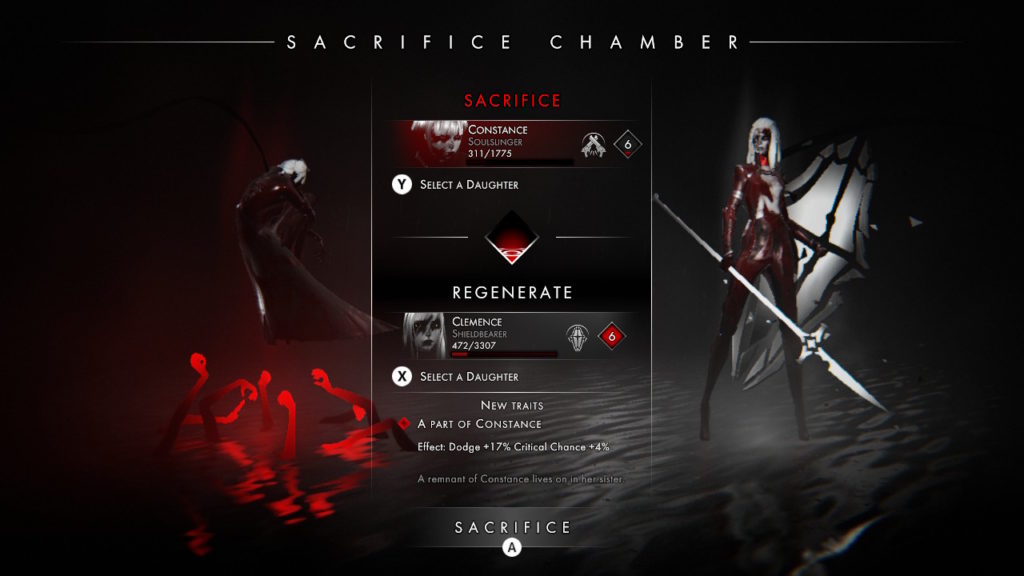
Surviving battles will give your daughters experience to level up, as well as the chance to randomly gain new traits. Traits often grant bonuses to damage, armor, or additional health, which makes your Daughters more powerful and constitute one of the previous few advantages players can enjoy in Othercide. But while the trait system is kind of cool, it also sometimes just feels like an unnecessary poke in the eye from an already difficult game as not all traits are positive, and they can be triggered in the most frustrating ways. One trait, Arrogant, only activates if you keep a character from getting damaged in a fight, and its main effect reduces the amount of experience that character gains. So not only can you not heal without losing a character of equal or greater power, you also sometimes get punished for successfully preserving your characters from taking any damage in the first place!
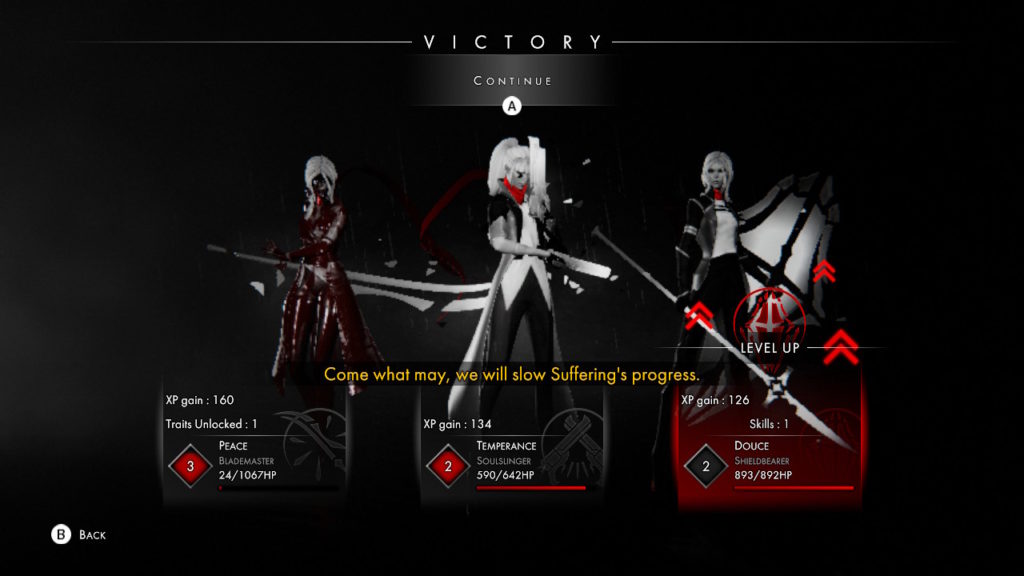
Surviving battles also grants helix points, memories, and shards, which are the main ways you can strengthen your squad. Helix points can be spent to either generate new Daughters or attach acquired memories to their skills. Memories will strengthen your Daughters’ abilities either by increasing damage, adding timeline manipulation elements, or other useful effects. Shards are allocated to universal bonuses called remembrances. Remembrances are unlocked when you hit certain achievements, and are pretty much the only way players can actually garner enough useful assets to compete with the game’s difficulty. In the early going, the game can get pretty frustrating in part because of a lack of resources, particularly helix. It can feel like you never have enough to both keep a deep enough stock of Daughters and apply enough memories to stay competitive. Once you’re a few runs in and have unlocked certain key remembrances, however, it’s not so bad, so don’t get discouraged if it feels like you’re not getting much traction early on.
Having to sacrifice stronger characters to heal weaker characters actively works against your ability to use all the cool abilities and combos the game’s system promises. Your main method of keeping characters alive (or at least it was mine) is by manipulating the timeline to keep your opponents from making any moves. By the time you build a character up far enough to get the best abilities and maximize them with memories, however, they’re usually pretty banged up and you’ll frequently have to sacrifice one of your best units to keep a unit of equal or lesser power alive. Sacrifices do provide some useful bonuses to the receiving unit aside from regaining health in the form of new traits, but they are never powerful enough to make up for the unit you lose. You can resurrect dead characters with special tokens gained through rescue missions and remembrances, but those are few and far between. As any X-Com player will tell you, the most painful thing you can ask a good commander to do is lose a soldier that’s been with them from the start, and Othercide requires you to make those decisions with startling, numbing, exhausting regularity.
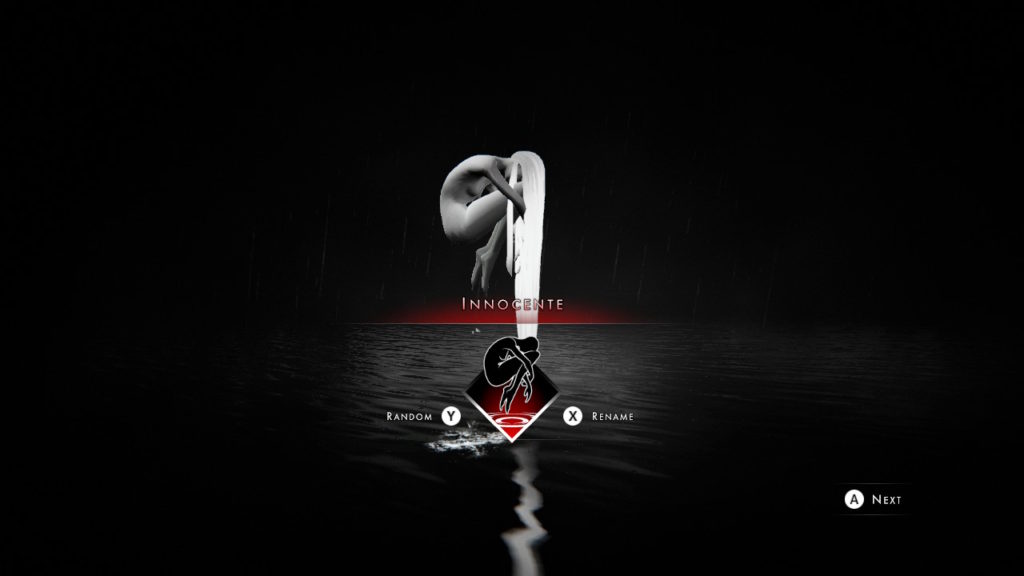
I get that Othercide wants to force you to make tough decisions, but honestly, all the ways the game actively stacks the rules against you can sometimes make it feel like this isn’t a game made to challenge anyone, but rather an elaborate way to cyber-bully the players who pick it up. When it works, and you finally get a lineup built the way you want it, you can only realistically hope to have that team together for like two tough battles, tops, before you have to sacrifice someone and rearrange or entirely rebuild your roster again. That, ultimately, is one of the areas where this game falls flattest; making your characters so interchangeable. The comparison I made earlier to X-Com is perhaps the most apt; that game is not known for forgiving any mistakes, but anyone who has played it knows that once you have a few units that have made it through several missions with you, you become attached to them as their own characters. Your shared experience on the battlefield makes them, and by extension the game, mean that much more to you, even though the game doesn’t really do anything to give them personalities. Othercide doesn’t offer the same opportunity; you just endlessly cycle through Daughters without really having any chance to get attached to any of them, and the game just feels less meaningful because of it.
We’ll finish up talking about the game’s graphics and performance, which is again a mixture of some really awesome elements and some nagging issues. Othercide’s aesthetic is mostly black and white, emphasizing the bleak prospects of the Red Mother’s mission. The game sparingly introduces red elements, too, which add just enough variety to the visuals to prevent them from feeling dull, and accentuate the awesome character and monster designs. The downside is that it looks like they really had to compromise on visual quality in order to get this game running on the Switch. Othercide looks way better in the PC trailers I’ve seen than it does on the Switch, which is a shame. More disappointingly, there’s a lot of lag when navigating the game’s menus. The between-mission menu is frequently very slow to respond when you try to switch windows or the entries within them, and the game often fails to register button inputs for several seconds after entering a new menu.
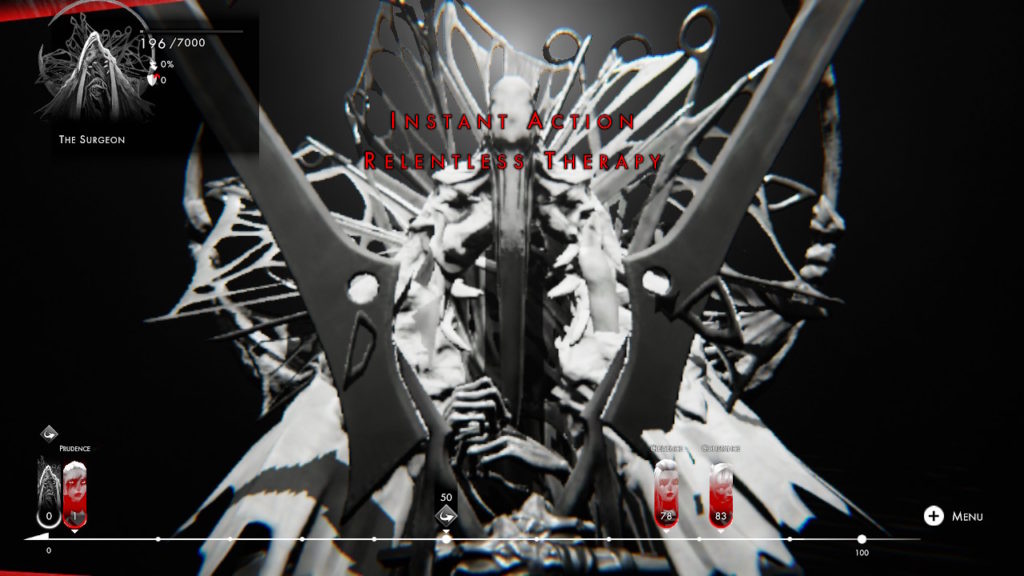
Othercide is one of the most frustrating games I’ve ever reviewed. On the one hand, I absolutely adore its aesthetic, lore, and tactical gameplay concepts. But the relentless way that the game sets out to undercut every single advantage you can think to build for yourself gets tiresome pretty quickly. This evens out to an acceptable degree after starting a few runs and unlocking a stock of shards and remembrances, but you have to stick with the game for a while before it starts to feel manageable in any way. There’s only so many times a game can beat me up and spit me out without any tangible feeling of progress before discouragement sets in, and Othercide tiptoes over the wrong side of that line just a little too much for me to wholeheartedly recommend it.
But it doesn’t prevent me from recommending it at all; the tactical elements offered by the timeline system and exploring the possible combos offered by exploring the game’s three character classes are sure to please any fan of turn-based strategies. The graphics are a dark, murky delight (even if they’re a little pixelated on the Switch), with just a splash of color to make things pop. The game’s setting and the few drips of lore it offers are enthralling and build a very cool world around only a few characters. I like this game; but I think I’d love it if it just cut me a break even once. Or maybe if the devs just got rid of that pesky menu lag.



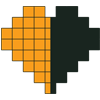

Buy Othercide
Digital – $39.99
Follow Lightbulb Crew

Follow Focus Home Interactive


The Switch Effect was graciously supplied a code for review purposes.

